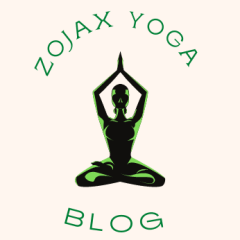What is Revolved Triangle (Parivrtta Trikonasana ) ?
Revolved Triangle Parivrtta Trikonasana is an inverted variation of the triangle that is more intense.
It involves twisting and stretching the body, which improves blood circulation, particularly in the lower portions of the spine, and allows the spine and back muscles to work properly.
Step by step instruction
1. We step in Tadasana.
2. With the inhale, we jump or step into a gap 3.5–4 feet long. Both feet are parallel, with toes pointing forward. We spread our arms to the side, at shoulder height, palms facing the ground. We activate both arms, stretch the shoulders, the shoulder blades, move them as far away from the spine as possible, strengthen the elbows, and extend the right fingers to the side, as if someone is pulling us towards them. We lift our chests and look forward.
3.Turn the right foot 90 degrees and the left foot 45-60 degrees to the right so that the heels remain in the same line. Tighten both thighs. We center and fix the right knee by pulling the cup of the same upwards, keeping it in line with the center of the right ankle.
4. With the exhale, turn the torso to the right side, leaning forward and over the right leg. We place the left palm next to the right foot, on its outer side, and we stretch the right hand and extend it towards the ceiling (palm turned away from us) so that both hands are vertical, in the same line. We turn our heads up and look at the thumb of our right hand. Neck and head in line with the spine
5. We strengthen the knees and legs after we have taken the body position. The back of the right leg is pressed to the left. “Ground” the soles, be careful not to lift the toes of the right foot and to fix, fix the outside of the left foot to the ground. The weight of the body is mostly on the feet, primarily on the “back” heel. That is why we take care not to lean the body too much on the lower arm. It gives us security and helps maintain balance in the position.
6. We stay in this asana, breathing normally, from 30 seconds to 1 minute.
7. With the inhale, raise the left arm, straighten the torso and turn from the front, in the initial gap. We straighten our feet, lower our arms and repeat on the other, left side, staying in the pose for the same period of time.
08. With the exhale, we jump or step into the starting yoga pose, Tadasana.
Notes:
We can lower the lower arm to the ground (on the inside or outside of the foot we’re bending towards) or we can place it on a yoga block adjacent to the inside or outside of the foot if the ground is too far away to contact with the hand (own requirements).
The inability to keep the back heel firmly on the ground, which renders us unsteady, is one of the most challenging aspects of this asana.
We place the back heel against the wall and push it towards it to fix this and stabilize the body’s position in the asana. This will assist us in keeping it ‘grounded.’

Therapeutic benefits of Revolved Triangle (Parivrtta Trikonasana )
- constipation
- digestive problems
- asthma
- lower back pain
- sciatica
Benefits of Revolved Triangle (Parivrtta Trikonasana )
- strengthens and stretches the legs (thighs, leaves, knee tendons)
- stretches the hips and spine
- strengthens the muscles of the hips and spine
- opens the chest, deepens breathing
- relieves back pain
- strengthens and stimulates internal organs
- develops a sense of balance
Contraindications, warnings and precautions:
- back or spinal cord injury migraine,
- headache
- diarrhea
- insomnia
- low blood pressure people with problems in the neck keep their head in a neutral position, looking straight, extending both sides of the neck equally
- people with high blood pressure turn their heads down and look at the ground
Read for more: Revolved Triangle Pose – Parivrtta Trikonasana



